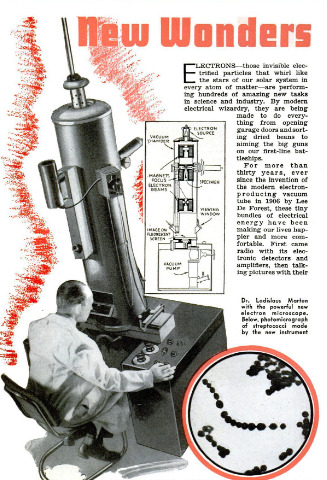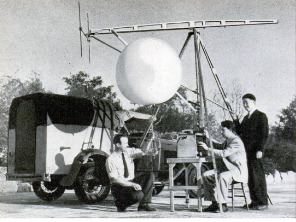-
Title (Dublin Core)
-
New wonders from electrons
-
Article Title and/or Image Caption (Dublin Core)
-
New wonders from electrons
-
extracted text (Extract Text)
-
"ELECTRONS—those invisible elec-
E trified particles that whirl like
the stars of our solar system in
every atom of matter—are perform=
ing hundreds of amazing new tasks
in science and industry. By modern
electrical wizardry, they are being
made to do every-
thing from opening
garage doors and sort-
ing dried beans to
aiming the big guns
on our first-line bat-
tleships.
For more than
thirty years, ever
since the invention of
the modern electron-
producing vacuum
tube in 1906 by Lee
De Forest, these tiny
bundles of electrical
energy have been
making our lives hap-
pler and more com-
fortable. First came
radio with its elec-
tronic detectors and
amplifiers, then talk-
ing pictures with their
powerful vacuum- |
tube amplifiers, then |
television with its pic- |
ture-producing cath-
ode-ray tube, and now |
the vast new field of |
modern electronics. |
Thus, stemming from |
the development of |
the vacuum tube in |
which electrons
streaming from a |
wire filament form an |
electricity conducting
bridge that can be
made to control all |
sorts of electrical ap-
paratus, the field of |
electronics has grown
into a major branch of |
our vast and expand-
ing electrical industry. |
Just a few days ago, the Camden, N. J,
laboratory of the Radio Corporation of
America announced the newest of these
electrical marvels—an electronic microscope
capable of bringing into view minute speci-
mens more than forty times smaller than
the smallest visible under any conventional
instrument. With it, science may soon view
objects so small that they never before have
been seen by the human eye.
Employing streams of electrons instead
of beams of light, and electrically energized
magnets instead of lenses, the $18,000 in-
strument resembles a giant metal vacuum
tube. Streaming down from the upper end
of its ten-foot cylindrical barrel like rays
of light, beams of electrons produced by an
electrically heated filament are focused on
the specimen to be magnified. Then, pass-
ing through electromagnets which deflect
them just as lenses bend rays of light, the
electrons strike a fluorescent screen at the
bottom of the microscope. This bombard-
‘ment causes the screen to glow like the view-
ing screen of a television receiver and pro-
duces in visible light an enlarged image of
the tiny specimen under study. By regulat-
ing the strength of the magnets and the
flow of electrons, the operator can control
the magnification so that objects may be
either photographed or studied visually.
If you have ever visited the Pennsylvania
Station in New York City you probably
have noticed the swinging doors that open
as if pulled by some unseen hands when you
approach them. Similar doors are used in
restaurants and many public buildings.
Electrons are the unseen hands that oper-
ate these doors. In approaching them you
intercept a beam of light aimed at a magic-
eye tube and a stream of electrons within
the tube serves as a valve to feed electricity
to motors geared to the doors.
The ability of these photo-electric tubes,
as the magic eyes are called, to react to light
has made them one of the most versatile
electronic servants to come from ‘the lab-
oratory. Among their varied tasks in in-
dustry is sorting raisins and other fruits,
counting logs at paper mills, switching on
lights at airports, and testing breakfast
food by its color. One of their newest feats
is operating huge highway advertising signs
which flash on at night automatically when
they are struck by the headlights of an ap-
proaching car.
A recent demonstration in an Eastern
bottling works illustrates the amazing sen-
sitivity of these electron-operated eyes.
Moving along a conveyor, 100,000 beverage-
filled bottles passed in single file
between a tiny electric spotlight
and one of these light-sensitive
cells. The system had been de-
vised to prevent any bottle which
by some accident contained for-
eign matter from passing through
to the packing room. To test the
installation, an attendant placed
a single eyelash in one of the bot-
ties. Ome by one the bottles
moved along, but when the con-
tainer with the eyelash reached
the robot inspector it was kicked
to one side. The electric eye, re-
acting many times faster than
you can wink your own
eye, had spotted the lone
eyelash and tripped a me-
chanical arm that rejected
the bottle!
What promises to be
one of the most elaborate
electric-eye installations of
this kind in the world will
help to control automobile
trafic in the new East
River tunnel now nearing
completion in New York
City. Electric eyes placed
at each end of the under-
water tube will automati-
cally subtract the number
of cars leaving from the number of cars
entering and indicate on a dial just how
‘many machines are in the tunnel at any one
time. Thus the policemen in charge will
known minute by minute when to speed up
traffic and when to slow it down. Other
light-sensitive tubes will guard against ac-
cidents by switching on street lights when
dusk approaches, by regulating the light-
ing within the tunnel to match that out-
doors, and by sounding a warning bell when-
ever a vehicle nears the tunnel with a load
t00 high to enter.
But counting cars and inspecting bever-
age bottles are only a few of the jobs that
modern science is delegating to electrons.
In a novel sterilizing lamp developed by
Dr. Harvey C. Rentschler of the Westing-
house Electric and Manufacturing Co., these
tiny electrified particles stream through a
glass tube to produce bacteria-Killing ultra-
violet rays. In his laboratory, I saw small
microdrganisms literally explode and die
when struck by the black light of the lamp.
Installed in bakeries, hos-
pital operating rooms, and
biological laboratories where
vaccines are prepared, these
ultra-violet tubes virtually
eliminate all germs from the
alr. In butcher-shop refrig-
erator and meat-curing
rooms, they prevent decay
and, by making it possible to
raise the temperature with-
out spollage, they reduce the
time required to tenderize
meat from five weeks to
three days.
Tn other fields, recent ad-
vances in electronica cover a
wide range. X rays, using
faster films and more pow-
erful tubes, now record split-
second candid-camera. snap-
shots of organs in action.
Electrical welding has re:
colved added precision and
control through the develop-
ment of almost-human elec-
tronic operating mechanisms.
Television, through the per-
fection of better and better
tubes, has Increased its range
from fifty to 150 miles.
AL the Schenectady, N. Y.,
laboratories of the General
Electric Co, electrons have
made possible revolution-
ary machine that weighs by
color—an electronic scale so
sensitive that It can accurate-
Iy give the weight of metal
lic particles so infinitesimal
that they are 100,000 times too small to see.
Consisting of a series of photo-clectric
tubes and a dozen lenses, the amazing ma-
chine registers the color changes in chemical
Solutions as the metallic particle is added.
The degree of color change depends on the.
amount of metal and, although the altera-
tions in the hue are far too slight for the
human eye to note, the electronic brain de-
tects them and gives an accurate record of
the indicated weight. Already this technique
has been worked out for some twenty of the
commonest metals and the list is rapidly be-
ing expanded.
Thus, with electrons playing an ever-in-
creasing rele in our world of mechanics and
research, no other realm of twentieth-cen-
tury science, it is safe to say, has produced
more laboratory and industrial wonders
than the research in the field of electronics.
As a result, the tiny electron, relatively un-
known not too many years ago, is becom-
ing a mighty midget capable of doing &
giant's work in the modern world.
-
Contributor (Dublin Core)
-
Robert E. Martin (article writer)
-
Language (Dublin Core)
-
eng
-
Date Issued (Dublin Core)
-
1970-08
-
pages (Bibliographic Ontology)
-
40-45
-
Rights (Dublin Core)
-
Public domain
-
Archived by (Dublin Core)
-
Sami Akbiyik
-
Marco Bortolami (editor)
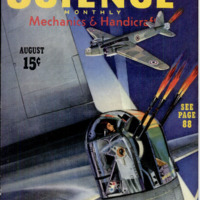 Popular Science Monthly, v. 137, n. 2, 1940
Popular Science Monthly, v. 137, n. 2, 1940
 Ekran Resmi 2022-01-31 10.59.30.png
Ekran Resmi 2022-01-31 10.59.30.png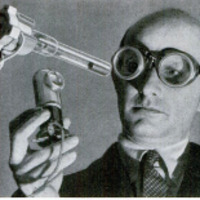 Ekran Resmi 2022-01-31 10.59.43.png
Ekran Resmi 2022-01-31 10.59.43.png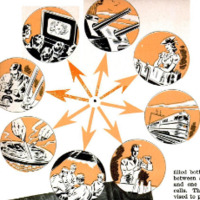 Ekran Resmi 2022-01-31 10.59.52.png
Ekran Resmi 2022-01-31 10.59.52.png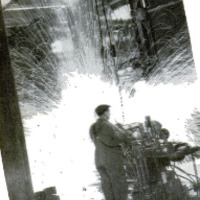 Ekran Resmi 2022-01-31 11.00.02.png
Ekran Resmi 2022-01-31 11.00.02.png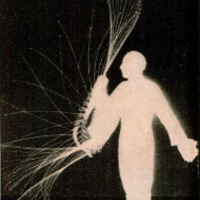 Ekran Resmi 2022-01-31 11.00.08.png
Ekran Resmi 2022-01-31 11.00.08.png Ekran Resmi 2022-01-31 11.00.18.png
Ekran Resmi 2022-01-31 11.00.18.png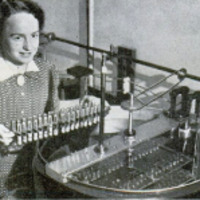 Ekran Resmi 2022-01-31 11.00.24.png
Ekran Resmi 2022-01-31 11.00.24.png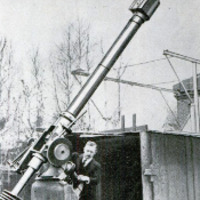 Ekran Resmi 2022-01-31 11.00.30.png
Ekran Resmi 2022-01-31 11.00.30.png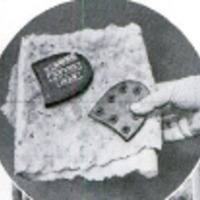 Ekran Resmi 2022-01-31 11.00.35.png
Ekran Resmi 2022-01-31 11.00.35.png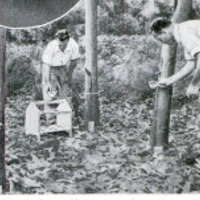 Ekran Resmi 2022-01-31 11.00.40.png
Ekran Resmi 2022-01-31 11.00.40.png
